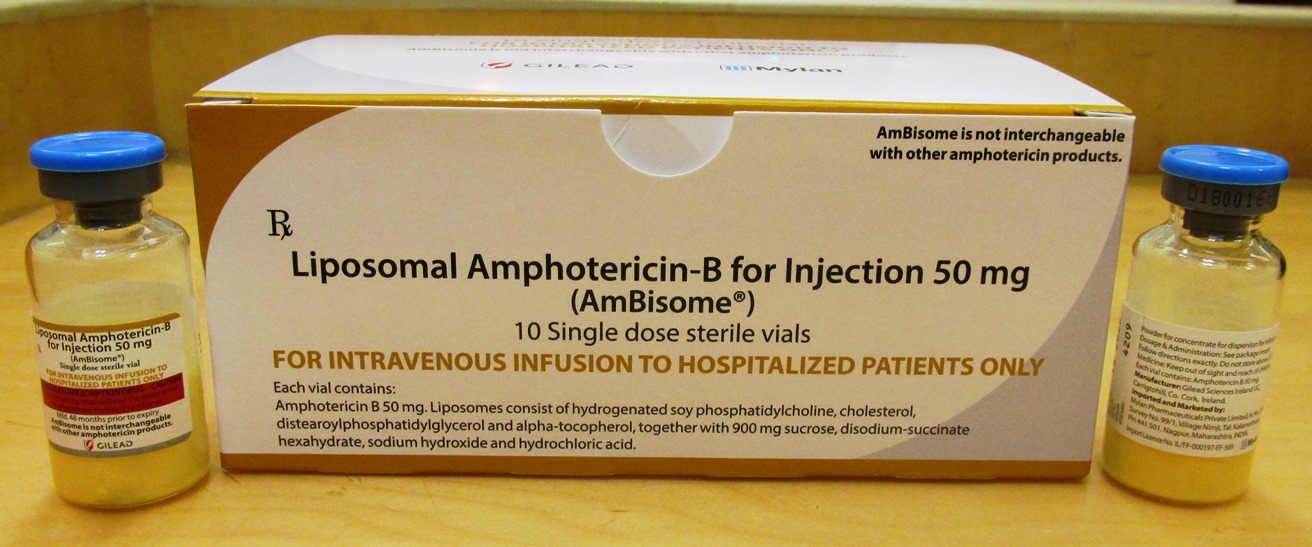Ambisome
Liposomal Amphotericin B 50mg Injection
Details
Purpose
Liposomal amphotericin B 50mg injection is used for the treatment of the following:
- Fungal infection in febrile and neutropenic patients
- Treatment of cryptococcal meningitis in HIV-patients
- Treatment of patients with candida species
- Treatment of visceral leishmania in immunocompromised patients.
The medication has a brand name of ambisome which is available in the market.
How does it work?
Liposomal amphotericin B 50mg injection is made up of a true single bilayer liposomal drug delivery system that acts on the fungal cells. These bilayers are hydrated in aqueous solutions to make them more effective. On infusions, the bilayers from multiple concentric layers form emulsification of multilamellar vesicles which acts on the fungal cells and hence, reducing the growth.
Measures and precautions
- Ambisome injection is prescribed by the doctor to cure the fungal cell proliferation in the user body.
- The drug should be infused into the user body in the presence of medical supervision only.
- Do not try to infuse the drug without the proper consultation of the doctor.
- Ambisome injection is less toxic to the user body. however, some serious effects may occur.
- The patient should closely monitor their health records including hepatic, renal, and hematopoietic functions to see the effects of the drug.
- No overdose symptoms have been found in the users of liposomal amphotericin B 50mg injection in clinical trials.
- Ambisome injection should be administered by intravenous infusion only, using a controlled infusion device, forapprox. 120 minutes.
- Do not lower or increase the doses of liposomal amphotericin B 50mg injection by yourself. Always consult the doctor for this.
- Dosing and rate of infusion of the injection should be individualized to the needs of the patient to ensure maximum efficacy while minimizing systemic toxicities of the drug.
Side-effects
- Rashes
- Fever
- Dizziness
- Shaking
- Flushing
- Loss of appetite
- Nausea
- Chills
- Vomiting
- Diarrhea
- Stomach pain
- Headache
- Shortness of breath
- Rapid breathing
- Insomnia
- Muscle pain
- Painful urination
- Blue lips
- Seizures
- Mood changes
- Bleeding
- Old sweats
- Sore throat
Interactions
The injection showsan interaction reaction with antineoplastic agents that may enhance the potential of renal toxicity, hypertension, and bronchospasm. It is advised to intake antineoplastics as concomitant with caution. Some interactions are also seen with the concurrent use of corticosteroids and ACTH which may cause cardiac dysfunction. All these drug interactions should be closely monitored to keep the chances of adverse effects to a minimum.
